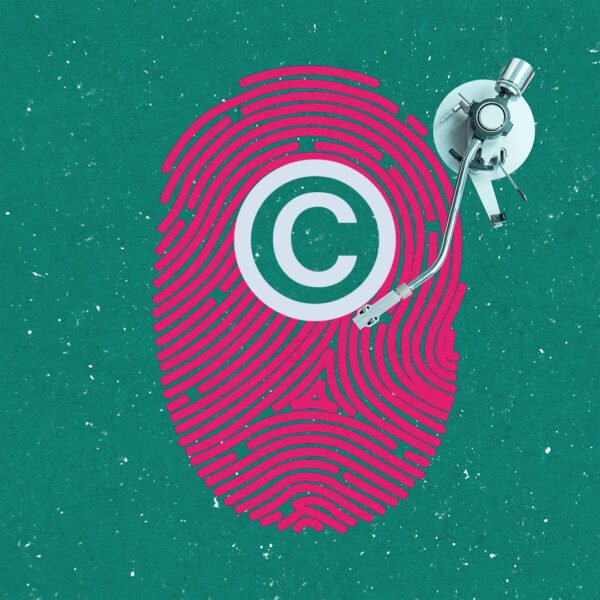In recent years, the landscape of book publishing has been transformed by the rise of self-publishing. This method, where authors choose to publish their work independently without the involvement of traditional publishers, has democratized the process of book creation and distribution. With advances in technology and accessibility to online platforms, self-publishing has become not just a viable alternative but a preferred choice for many writers. It allows for complete creative control, potentially higher profits, and direct interaction with readers.
Today, self-publishing is a significant force in the publishing industry, offering a platform for voices and stories that might otherwise remain unheard. As we see an increasing number of self-published books achieving commercial success and critical acclaim, the relevance of this publishing path continues to grow, reshaping how stories are told and consumed globally. Let’s delve into the process of selling self-published books!
Advantages of Self-Publishing Over Traditional Publishing
One of the most significant advantages of self-publishing is the unparalleled control it offers authors over the entire publishing process. From the initial concept to the final product, self-published authors make key decisions regarding the content, design, and formatting of their books, enabling them to retain their unique voice and vision without compromise. This level of autonomy is especially appealing to authors who wish to maintain artistic integrity or cater to niche markets often overlooked by larger publishers.
Additionally, self-publishing can be more financially rewarding than traditional routes. Without the need to split profits with a publisher, self-published authors can earn higher royalties per book. They also enjoy pricing flexibility, which allows them to adjust the cost of their books in response to market demands, promotions, and competitor pricing. This control over retail price can significantly enhance their earning potential, particularly when selling digital versions of their books, which incur minimal ongoing production costs.
Furthermore, self-publishing greatly reduces the time it takes to bring a book to market. While traditional publishing can involve a lengthy process of pitches, edits, and approvals that can stretch over years, self-published works can be released as soon as they are finished. This speed to market is crucial for capitalizing on current trends and topical interest, providing self-published authors with a timely advantage in the fast-paced literary market.
Your Publishing Journey Awaits – Start NowChallenges Faced by Self-Published Authors
Self-publishing offers numerous benefits, but it also presents distinct challenges. One significant hurdle is the lack of access to traditional distribution channels. Unlike traditionally published authors, who benefit from the established networks and resources of a publishing house, self-published authors often struggle to place their books in mainstream bookstores and libraries. This limited visibility can hinder sales and audience reach, making it difficult for these authors to gain traction in a crowded market.
Moreover, self-published authors bear the full responsibility for marketing and promoting their books. Without the support of a dedicated marketing team, authors must become adept at utilizing social media, crafting effective press releases, and networking with influencers and reviewers. This not only demands a significant investment of time and energy but also requires skills that may be outside the typical writer’s expertise.
Additionally, self-published books often face perception issues and credibility challenges. There is still a lingering stigma that self-published works are of lower quality due to less rigorous editing and design processes. Overcoming these preconceptions requires self-published authors to ensure their books meet high standards and to actively seek out reviews and endorsements that can lend legitimacy and appeal to their work.
Platforms for Self-Publishing
The self-publishing sector is supported by a variety of platforms, each offering unique tools and opportunities for authors to publish and distribute their work. Kindle Direct Publishing (KDP) is perhaps the most well-known among these, allowing authors to easily self-publish a book in both eBooks and paperbacks. KDP stands out for its seamless integration with Amazon, providing immediate access to a massive global marketplace. This platform offers up to 70% royalties on sales, which is significantly higher than traditional publishing rates, and it enables authors to retain control over their rights and make changes to their books at any time.
Aside from KDP, other major platforms include Smashwords, Lulu, and IngramSpark. Smashwords distributes to a wide array of eBook retailers, while Lulu excels with print and photobooks and offers global distribution. IngramSpark, on the other hand, taps into an extensive network of bookstores and libraries, offering wider print distribution than most. Each platform has its specific strengths, fees, and audience reach, requiring authors to carefully consider their goals and the specific needs of their various booksellers before choosing where to publish.
Spines Publishing Platform
Spines revolutionizes self-publishing by combining speed, affordability, and comprehensive support. Authors can swiftly transform manuscripts into published books within 30 days, benefiting from budget-friendly plans that undercut industry standards through AI-driven cost efficiencies. Spines offers dedicated support through a personal production manager, ensuring a seamless journey from start to finish. It accommodates all formats—print-on-demand, eBooks, and audiobooks—catering to diverse reader preferences.
Additionally, global distribution across over 100 channels, including major retailers like Amazon and Barnes & Noble, maximizes reach. The platform is designed for all authors, with a user-friendly dashboard that simplifies proofreading, editing, formatting, and cover design. Spines guarantees satisfaction with a 7-day money-back policy, making it an ideal choice for both new and established writers. Sign up for free today!
Your Publishing Journey Awaits – Start NowMarketing Strategies for Self-Published Books
Marketing is a critical factor in the success of selling self-published books. Without the promotional muscle of traditional publishers, self-published authors must adopt strategic and innovative marketing approaches to reach their audience and drive sales. Effective marketing not only enhances visibility but also helps build an author’s brand and reader loyalty.
Online marketing techniques are fundamental for self-publishers. Leveraging social media platforms like Facebook, Instagram, and Twitter can significantly boost engagement and awareness. Authors should consistently post content that adds value and fosters interaction, such as behind-the-scenes insights, book excerpts, and reader polls. Creating an author website also serves as a central hub for everything related to the book, including synopses, author biographies, blog posts, and purchasing links. A well-maintained website enhances credibility and provides a direct channel for connecting with readers.
In addition to online strategies, video content such as book trailers has become an increasingly popular tool. These trailers can capture the essence of the book dynamically, appealing to the visual preferences of today’s media consumers. By distributing these trailers across multiple platforms—YouTube, social media, and the author’s website—authors can effectively tease story elements and generate buzz.
Offline methods remain valuable, too. Attending book fairs, conducting readings at local libraries and bookstores, and participating in literary festivals can provide direct engagement with potential readers. Combining both online and offline marketing strategies offers the best approach to promoting a self-published book in a competitive market.
Distribution: Getting Your Book to Readers
The distribution of self-published books involves multiple channels and strategies, each playing a crucial role in reaching readers effectively. Self-published authors can opt for digital or print formats, or a combination of both, to maximize their book’s exposure and accessibility.
eBooks are a popular choice for self-publishing due to their low overhead costs and broad distribution potential. Platforms like Amazon’s Kindle Direct Publishing (KDP), Apple’s iBooks, and Barnes & Noble’s Nook Press allow authors to reach a global audience quickly and efficiently. eBooks also offer readers instant access to purchased books, which can boost impulse buying.
On the other hand, print copies remain valuable for readers who prefer physical books. Print-on-demand (POD) services like CreateSpace and IngramSpark allow authors to sell physical books without the upfront costs associated with traditional printing. Books are printed only when an order is placed, reducing the risk and cost of unsold inventory. POD services can also link with online retailers and distribute to a network of bookstores, thus bridging the gap between self-published authors and physical book sales channels.
Strategically combining both eBooks and print purchase options, along with utilizing POD services, provides a comprehensive approach to distribution that accommodates diverse reader preferences and helps maximize the book’s reach and sales potential.
Retail Presence and Independent Bookstores
Gaining a foothold in retail bookstores, both independent and in chain bookstores, can be a formidable challenge for self-published authors. These stores often prioritize books from traditional publishers, who can assure them of established demand and returnability on unsold stock. However, there are effective strategies that self-published authors can employ to penetrate these important retail spaces.
Building strong, personal relationships with bookstore owners and managers is key. Authors can start local, reaching out to bookstores in their area with personalized pitches that highlight how their book aligns with the store’s clientele and community focus. Offering consignment deals can also be attractive to independent bookstore owners, as it reduces their financial risk by only paying for books that sell.
Additionally, participating in local author events, readings, and signings at these bookstores can draw in crowds and foster a community connection. These engagements not only increase the visibility of the store and the author’s book but also demonstrate their commitment to supporting local businesses, which can encourage bookstore owners to stock their titles.
Your Publishing Journey Awaits – Start NowThe Role of Reviews and Readers’ Perceptions
Reviews are a critical component of success for self-published books, greatly influencing readers’ perceptions and purchasing decisions. Platforms like Amazon and Goodreads are pivotal in this regard, as they are often the first points of contact between potential readers and new books. Positive reviews on these sites can significantly boost a book’s visibility by improving its ranking in search results and increasing its credibility among prospective buyers. Conversely, negative reviews can deter potential readers and diminish sales prospects.
Word-of-mouth also plays a vital role, acting as a powerful endorsement that can either propel a book to popularity or relegate it to obscurity. Readers who enjoy a book are likely to recommend it to friends, family, and online communities, leading to increased sales through organic growth. For self-published authors, encouraging readers to share their thoughts both online and offline can be an effective strategy to amplify their book’s reach and enhance its reputation in the competitive market.
Case Studies of Successful Self-Published Authors
The self-publishing realm is filled with success stories that serve as inspiring benchmarks for aspiring authors. One notable example is Andy Weir, who initially self-published “The Martian” as a serialized novel on his blog. After gaining a significant following, he self-published it on Amazon, where it became a sensation, eventually leading to a traditional book deal and a blockbuster movie adaptation. The key takeaway from Weir’s experience is leveraging online platforms to build a readership before launching a full book.
Another successful self-published author is E.L. James, whose “Fifty Shades of Grey” trilogy began as fan fiction. It was later self-published as an eBook and print-on-demand. Her books rapidly gained popularity, catching the attention of a traditional publisher and turning into a global phenomenon. James’ story highlights the importance of tapping into existing communities and niches that share your interests and themes.
Both cases emphasize the significance of understanding your audience and finding innovative ways to reach and engage them. They also show the potential of self-publishing to lead to traditional publishing deals and other opportunities if the books achieve significant success on their own merits. These stories inspire self-published authors to be proactive in marketing and to utilize all available platforms for sharing their work.
Comparative Analysis: Self-Published vs. Traditionally Published Books
When comparing self-published and traditionally published books, notable differences emerge in sales, revenue, and audience reach. Traditionally published books often benefit from higher initial sales due to established distribution channels and marketing support from publishing houses and literary agents. These books typically reach a wide demographic, including through international markets and major retail outlets, enhancing their visibility.
Conversely, self-published authors may find it challenging to achieve similar sales volumes initially due to limited distribution and marketing resources. However, they often retain a higher percentage of revenues from each sale due to the absence of publisher commissions. Self-published books can also be highly successful in niche markets, where authors tailor content to specific reader interests, potentially leading to strong, loyal followings.
In terms of reach, traditionally published books generally have broader market penetration, but self-published works have gained significant ground, especially in digital spaces where eBooks and online marketing can effectively target global audiences. This demonstrates that while traditional publishing offers advantages in visibility and initial reach, self-publishing provides greater revenue per book and the opportunity to cultivate a dedicated niche audience.
Legal and Financial Considerations
For self-published authors, understanding the legal and financial aspects of publishing is crucial. Copyright laws ensure that authors retain the exclusive rights to their work. In self-publishing, this means authors maintain control over the reproduction, distribution, and adaptation of their content, allowing them to decide where and how their books are sold. Authors need to register their copyright to safeguard against unauthorized use.
Royalties in self-publishing differ significantly from traditional publishing. Self-published authors often receive higher royalties per sale because they bypass traditional publishers, who typically take a significant share. However, authors must manage the vast majority of their own expenses, including cover design, editing, marketing, and distribution costs.
Financial planning is essential for authors, especially for first-time authors aiming to make a profit. New authors should budget for upfront costs such as editing, cover design, formatting, and initial print runs, as well as ongoing expenses for marketing and promotional efforts. While these initial investments can be significant, they are crucial for producing a high-quality book that stands out in a crowded market.
First-time authors need to understand the various revenue streams available, including book sales, royalties, and potential income from speaking engagements, workshops, or related products. It’s important to set realistic sales goals and forecast potential earnings based on market research and genre trends. Authors should also explore different pricing strategies and distribution channels to maximize their reach and profitability.
Keeping detailed financial records is crucial for tracking expenses and income, which helps in making informed business decisions. Additionally, understanding the tax implications of self-publishing income is vital. Authors must be aware of the need to set aside money for taxes, potentially hire a tax professional, and take advantage of any deductions available to them.
Planning financially enables authors to invest wisely in their books’ success and ensure a sustainable career. For first-time authors, this means not only covering the costs of publishing their current book but also building a financial cushion to support future projects. By taking a strategic approach to financial planning, authors can navigate the challenges of self-publishing and work towards achieving long-term success in their writing careers.
Your Publishing Journey Awaits – Start NowFuture Trends in Self-Publishing
The future of self-publishing looks vibrant, with several emerging trends poised to further revolutionize this dynamic sector of the publishing industry. Technological advancements are expected to continue lowering the barriers to entry, making it easier and more cost-effective for authors to publish and distribute their works. Enhanced digital tools, such as sophisticated self-publishing software for formatting and cover design, will enable authors to produce higher-quality books with greater ease.
Additionally, we are likely to see the rise of new platforms that integrate artificial intelligence to offer personalized marketing and distribution strategies, helping authors reach precisely targeted audiences. The growing popularity of audiobooks and podcasts also suggests that more self-publishers will explore these formats to connect with audiences who prefer audio content.
In conclusion, the self-publishing industry will likely embrace more technology-driven solutions, enhancing authors’ abilities to self-publish, promote, and sell their books in an increasingly digital world. These developments will continue to democratize the publishing landscape, allowing more authors to share their stories and succeed on their own terms.
Conclusion: Is Self-Publishing the Right Path?
Deciding whether self-publishing is the right path to sell your book depends on numerous factors discussed throughout this article. Self-publishing offers authors complete creative control, higher royalties, and faster market entry. However, it also requires them to navigate challenges such as limited distribution channels, the need for self-marketing, and overcoming public perception issues.
For authors seeking full control over their book from creation to sales, or those writing for niche markets, self-publishing can be highly rewarding. It allows for direct interaction with readers and the flexibility to adapt marketing and sales strategies quickly. Yet, those who desire the support of established distribution networks, professional marketing, and additional credibility that comes with traditional publishing might find those avenues more suitable.
Ultimately, the choice between self-publishing and traditional publishing should align with the author’s personal goals, resources, and willingness to engage directly with all aspects of the book publishing process. Each route offers distinct advantages and challenges, making it important for authors to carefully consider their priorities and the nature of their work before making a decision.
Your Publishing Journey Awaits – Start Now







